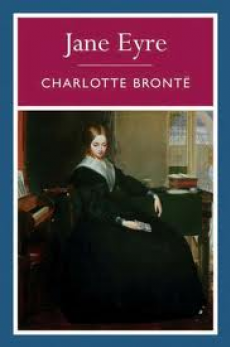
Many of us will have read Jane Eyre at GCSE level, as it’s one of many set texts you have to study. This is enough to put off some people – being forced to read anything often takes the pleasure out of it. But it’s chosen for GCSE courses with good reason; the plot is exciting, but not too complicated. It also covers a lot of issues and things that we still have to deal with today, so the book is relevant in a way that many others are not, because they become outdated and very obviously products of their time.
The story follows the life of a young woman, with a sad childhood and a mostly horrible experience at school. In spite of all this, she becomes a modest success story when she gets a job teaching at the school, which changes for the better. Then, she moves away to become governess (personal teacher) to a little French girl, who loves her very much. The girl’s father is often away, but when he returns Jane finds him rude and mysterious, at first. As she gets to know him, however, their relationship grows into something more, before a terrible discovery means Jane is forced to leave him. The rest is a romantic, epic tale of Jane’s life away from Mr. Rochester, and his searching for her to win her back.
The author, Charlotte Bronte, had to use a pen name (or a false name) in order to release the book. Hers was Currer Bell, and her sisters Emily and Anne did the same, using Ellis Bell and Acton Bell respectively. The reason for this was that women were seen as unable to write great works of literature at the time, and in order for their books to be successful and taken seriously, they had to pretend to be men. This shows how unfairly Victorian society treated women who were so clever, they threatened the idea of men being more intelligent than women.
This is actually an important theme of the novel. Jane Eyre is a plain looking woman, but she has such a strong personality and independent will that she wins the affection of Mr. Rochester - in the end. Many people in her childhood tried to beat this out of her, but she remained stubborn in her ways, and all the better for it! Also, because she is teaching children, she plays an important role in local society, and is not a typical Victorian housewife who sat around all day doing nothing. Like Anne Bronte, Charlotte discusses the unjustness of the laws of marriage, but she also raises controversial points about topics like mental health, which was the focus of a big debate at the time.
Charlotte Bronte’s main work is very different to the flagship works of her sisters, Emily and Anne. Emily’s Wuthering Heights has really volatile or unstable characters, whereas in Jane Eyre, most of the characters are very grounded, sensible and down to earth. This is similar to the Tenant of Wildfell Hall, but Anne is extreme in a different way – she’s more obviously feminist, and Charlotte even tried to prevent the work from being re-published after Anne’s death.
Like most of the Brontes’ work, Jane Eyre is a long book, so if you don’t have time to read all of it (though you really should!), there are so many film and TV adaptations you can watch to get a feel for the exciting novel. One of these is the recent 2011 film, starring Mia Wasikowska and Michael Fassbender as our romantic heroes. It’s 2 hours long, so why not snuggle under a blanket and watch it on a cold, rainy day this winter?
Bottom line: this book is a classic. Everybody should read it. No excuses, please!
Image from: https://klling.wordpress.com/2013/03/06/book-review-jane-eyre-by-charlotte-bronte/

0 Comment:
Be the first one to comment on this article.